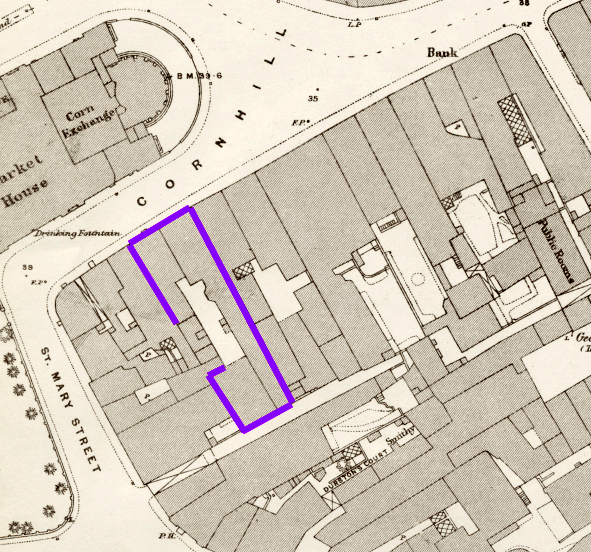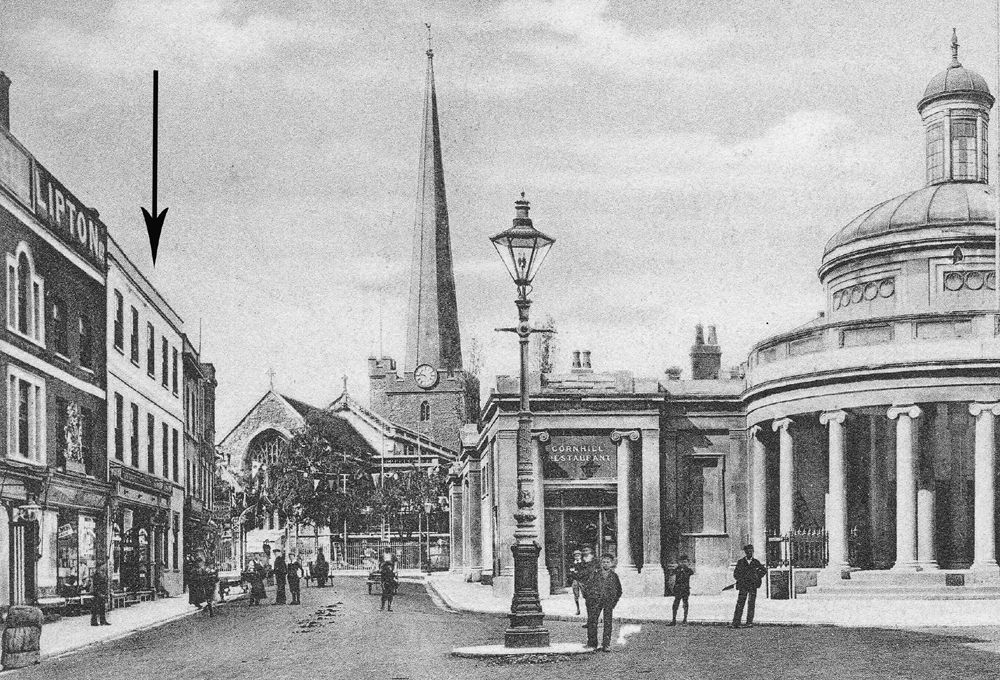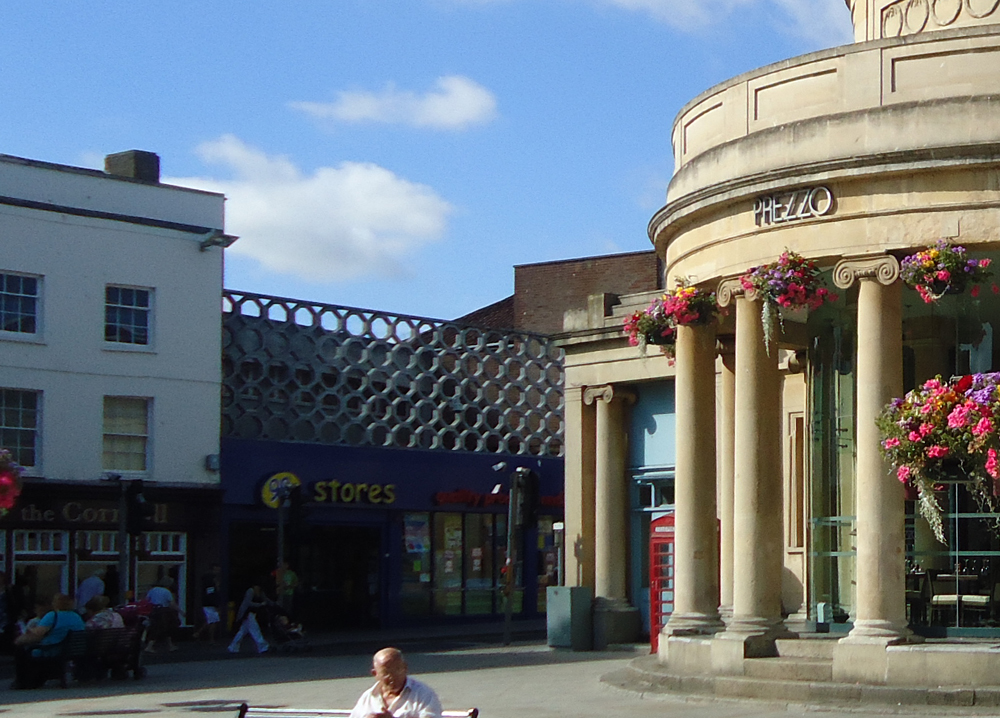Thompson’s was a popular ironmongers, who once operated on the Cornhill. The site of number 4 Cornhill appears to consist of two medieval burgage plots. Unfortunately, it cannot be traced with much certainty in the town’s medieval records, despite being next door to the well-documents Swan Inn (now the Cornhill Pub).

The two plots appear to have been conjoined for a long time, as the frontage is recorded by John Chubb in about 1800, showing a relatively long building of about four bays. It was about this time that Joseph Thompson established an Ironmonger’s shop at the premises. In about 1836, his son Francis James Thompson took over the business accompanied by his wife Rebecca, nee Stephens.

By 1832, we learn from an ilustration of the Cornhill (see Bob Dunning, Bridgwater History and Guide, 1992, p.67) the frontage of four bays recorded by Chubb was replaced by one of five, with large modern windows and a modern shop front. Only the facade seems to have changed, Ordinance Survey maps of the 1880s clearly show that behind this a number of complicated phases of construction were evident, some probably of some considerable age.

We learn a great deal about this building from Margaret Thompson Sturge’s little book, Memories and Echoes of Bygone days (1904). Francis James (her father) ran the ground floor shop, while Rebecca maintain the household above, as well as the parlour, which was also on the ground floor. Apprentices working in the shop would also be living there. On the top floor was the nursery, and Margaret recalled many events on the Cornhill, such as the trooping of the Yeomanry or the occasional political brawls at election time. After a cholera epidemic which almost killed Rebecca Thompson in 1848, the family moved out of the property for Huntworth in the following year, Francis James commuting the two miles each day. After the family moved out, the ground floor parlour was converted into more shop space.
The business passed from William Thompson (Francis James’ son) to business partner Bondin about 1914, who continued the business under the ‘Thompsons’ name until closure in 2007. They continued in the Cornhill site until 1956, when the business moved to Market Street. The business later moved again to Mount Street in 1982 after the demolition of the Market Street site for development of Angel Place. It finally closed in August 2007 as it could not compete with DIY chains.

In 1962 the entire building was razed to the ground. Its replacement, a supermarket called Fyne Fare (later Kwick Save) is an unusual building. The first floor shop front is topped by a concrete screen and the second storey frontage is set well back, and curves round. The reason for this odd arrangement is that, in the A38 to Taunton had to originally pass over the town bridge and along Fore Street, which had to curve round the Cornhill to get to St Mary Street and then Taunton Road, which caused terrific congestion, especially with holiday traffic in the summer. The intention by Somerset County Council was to eventually to widen the road in this area. The new building had to be built with this in mind, so the forward-facing ground floor and screen were only envisaged to be temporary, before the whole street front was demolished back to the line of the curved portion. Fortunately for the old adjoining buildings, this never came to pass, as the construction of the Broadway and Blake Bridge back in 1958 had started to ease congestion and the opening of the M5 motorway in 1974 helped even more. Even though the 1962 Cornhill building is undoubtedly ugly, it preserves quite an interesting piece of history.
Miles Kerr-Peterson, Tony Woolrich and Katherine Dilks, April 2020.
Sincere thanks to Mike Searle for confirming the year of demolition, also Nick Gibson for the explanation of the unusual design of the 1962 building.
